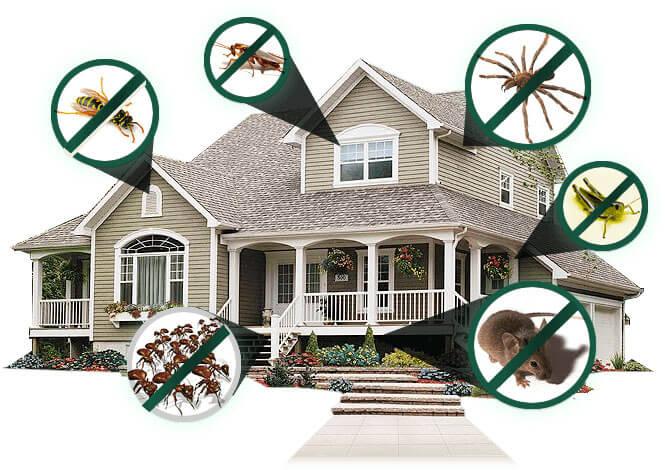A1 Pest Control Charlotte NC Bed Bugs - Specialist Extermination Services
Wiki Article
Bed Pest Therapy Failure: Comparing Chemical Vs. Non-Chemical Solutions
In the realm of bug control, especially when handling the persistent problem of bed insects, the choice between chemical and non-chemical treatment services can be an essential one. Both approaches provide distinct benefits and drawbacks, affecting variables such as effectiveness, safety and security considerations, and general price. By analyzing the nuanced information of each approach, a clearer understanding of which path to pursue in dealing with a bed insect invasion can be obtained.Effectiveness of Chemical Therapies
Chemical treatments for bed insect infestations have been extensively identified for their potent and fast effectiveness in removing these pests. When considering the efficiency of chemical treatments, it is vital to recognize that they can supply a comprehensive and quick remedy to a bed insect problem. Specialist pest control specialists often depend on pesticides to target bed insects at different stages of their life cycle, consisting of eggs, nymphs, and adults. These chemicals usually function by interrupting the bed bugs' nerve system, bring about paralysis and eventual death.Additionally, chemical treatments have the advantage of providing residual effects, indicating that they can continue to get rid of bed insects also after the preliminary application. This recurring activity is particularly advantageous in combating any type of possible re-infestations. In addition, the quick activity of chemical therapies can bring alleviation to people facing extreme bed insect problems, permitting them to regain control of their living spaces rapidly.
Safety And Security Worry About Chemical Solutions
One important aspect that calls for mindful consideration when making use of chemical options for bed bug therapy is guaranteeing the safety and security of passengers and the environment. Direct exposure to certain chemicals made use of in bed bug therapies can lead to respiratory system problems, skin irritability, or various other unfavorable reactions, especially in individuals with pre-existing problems or level of sensitivities.Additionally, the environmental influence of chemical options is one more substantial consideration. Some chemicals made use of in bed bug therapies might be dangerous to advantageous pests, wildlife, and environments if they leach into the soil or water supply. It is vital to make use of chemical treatments sensibly, adhering to safety guidelines, and taking into consideration less hazardous choices to reduce these dangers and make certain the safe and effective monitoring of bed bug invasions.
Benefits of Non-Chemical Strategies
Considering the possible safety and security issues and environmental influence connected with chemical services for bed bug therapy, checking out non-chemical methods offers an encouraging option with numerous unique advantages. Non-chemical therapies are environmentally pleasant, as they do not contribute to air or water pollution, making them a lasting option for pest control.In addition, non-chemical remedies can be efficient in targeting bed pests, consisting of hard-to-reach areas where from this source chemical therapies may not penetrate. Approaches such as warm treatment, vacuuming, vapor cleansing, and mattress encasements supply extensive removal without using harmful chemicals. Moreover, non-chemical techniques can be less turbulent, requiring marginal preparation and permitting for quicker reentry right into dealt with areas. On the whole, opting for non-chemical bed pest therapy methods not only prioritizes safety and security and ecological defense yet likewise ensures comprehensive and effective parasite control.
Limitations of Non-Chemical Treatments

Furthermore, non-chemical treatments frequently call for several applications to attain effective obliteration. This can be taxing and might not constantly ensure complete removal of all bed bugs and their eggs, specifically in hard-to-reach or surprise places.
Additionally, the success of non-chemical treatments heavily relies upon appropriate execution and thoroughness, which can be challenging for individuals without expert know-how. Poor application of non-chemical methods may lead to insufficient obliteration, leading to persistent invasions and the requirement for added therapies.
Therefore, while non-chemical treatments have their advantages, it is necessary to recognize these limitations and consider them when figuring out the most effective technique for taking care of bed bug problems.
Expense Contrast: Chemical Vs. Non-Chemical Options
Provided the limitations connected with non-chemical treatments, an essential aspect to evaluate in the context of bed bug management is the cost comparison between chemical and non-chemical options. Chemical therapies normally involve the application of insecticides by experts, which can vary from $250 to $900 per space, depending on the seriousness of the infestation and the dimension of the area to be treated. In contrast, non-chemical treatments like warmth therapy or heavy steam can be much more expensive, with costs ranging from $1,000 their website to $6,000 for a whole home. While the initial expense of chemical treatments might appear reduced, several treatments might be called for to completely get rid of the infestation, potentially boosting the general price. On the various other hand, non-chemical options might give an extra green and lasting option, although they can be cost-prohibitive for some people. Eventually, when taking into consideration the expense of bed insect therapy options, it is very important to weigh the in advance expenditures versus the performance and lasting sustainability of the picked technique.Conclusion

Thinking about the potential safety and security issues and environmental effect associated with chemical options for bed bug treatment, exploring non-chemical techniques provides an appealing choice with numerous distinctive benefits.Given the limitations associated with non-chemical treatments, a necessary facet to evaluate in the context of bed insect monitoring is the price comparison between chemical and non-chemical choices. In comparison, non-chemical therapies like warmth therapy or vapor can be more expensive, with expenses ranging from $1,000 to $6,000 for a whole home. While the first price of chemical therapies might seem lower, multiple treatments may be required to fully eliminate the invasion, potentially enhancing the general expense.In final thought, when comparing chemical and non-chemical bed bug treatment options, it is essential to consider effectiveness, safety, advantages, constraints, and price.
Report this wiki page